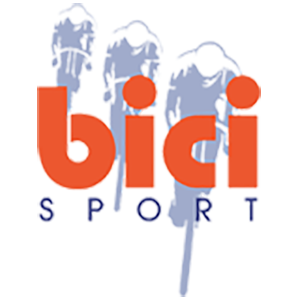A Primer for Juniors
OK, you’ve got a bike and a helmet, you’ve been speeding down the bike path scaring old ladies, maybe even beating your dad to the city limits sign (when he’s not looking). So you’re ready to race, right? Maybe, maybe not.
If you haven’t yet ventured into the world of local bike racing, there are some things you’ll want to know. Most races bear little resemblance to the Tour de France or other races you might see on TV, and essential information about junior racing, which can make a big difference in how much you enjoy your first attempts, may be hard to come by. The ratio of adults to junior racers is about 100/1, and most races are put on by volunteers who may not be familiar with junior rules. Even if your mom (or dad) is a Cat II racer and has initiated you into the joys of road cycling, don’t assume she knows everything about the rules that apply to junior races. Of course, you can find these things out by trial and error, as most people have done, but arriving prepared for your first race will help you avoid the kinds of minor crises that can ruin your experience. This article is drawn from the experiences of my son, Josef Nygaard, a 12-year-old who races for the Northern California junior development squad Team Swift and the advice given him by his coach, Laura Charameda, as well as his teammates and fellow competitors, but many of these things apply to older juniors as well.
Junior Gears
The USCF places a 7.93-meter gear limit on juniors’ bikes, and all USCF-sanctioned races enforce this rule, which is intended to keep small, growing legs from spending too much time in big gears. This limit means that your bike must travel no farther than 7.93 meters (26 feet) for each turn of the pedals. The easiest way to make your gears race-ready is to block out any gears under 14 on your rear cassette, assuming your biggest chainring is a 52. You can do this yourself (by adjusting the lower limit screw on your rear derailleur) or have your local bike shop do it for you. If you neglect to block out your gears before the race, there will probably be a parent, racer, or official at the race who can help you. But don’t be shy. You won’t be able to race unless you have the correct gears. Once you’ve blocked out your gears, you can leave them blocked out–you really won’t need the larger gears unless you’re trying to catch George Hincapie on a long Alpine descent—but if you catch the bike-racing bug, you can still have a complete range of gear choices by getting dedicated junior gears: either a cassette with a low gear of 14 (hard to find, but your local bike shop can order one for you) or a 45-tooth chainring to use with a standard cassette with a low gear of 12. The advantage of using a 45-tooth chainring is that you’ll be able to use standard rear wheels if you need to change one in a race.
Racing Age
There are four junior age groups: 10–12, 13–14, 15–16, and 17–18. The USCF defines your “racing age” as the age you’ll be on December 31 of the calendar year in which you’re racing. So, for example, if you turn 15 in November, that is your racing age for that year, even though you’ll actually be 14 for most of the year. This seems mercilessly unfair to many people. (For example, if you turned 12 last December, you may have been looking forward to racing with your buddy who turned 12 a month later in January. But you will have different racing ages—yours will be 13 this year and his 12, putting you in different age categories.)The bright spot is that many junior races combine age groups, so you may find yourself racing with your pal anyway, even though you’ll be competing for different placings.
The logic of this approach to racing age becomes apparent when you think about things like season-long race series, which are common in many regions. If racing age corresponded to actual age, not only would racing organizations have to keep track of results for their series, but they would have to keep track of birthdays as well. Then imagine a scenario in which you’re leading the 13–14 series only to turn 15 the day before the last race in the series, putting you into a category in which you’ve scored no points and unceremoniously flinging you from first place to last. And then consider the nightmares race officials would have about the inevitable parent protesting the fact that Joe Legstrong actually turned 15 the day before the Critical Mass Crit and shouldn’t have been racing the 13–14 race at all, and so on. Scenarios like these make it clear why it makes sense for your racing age to remain the same for the entire season.
Preparing Your Bike
It’s a good idea to take your bike to your local bike shop for a tune-up before your first race. If you don’t have time to do this, pump up your tires and make sure everything is in working order—spin the wheels, test the brakes, etc. It’s also a good idea to check your tires the night before for debris, like small pieces of glass or metal that may be lurking in small cuts in your tires just waiting for a bump to push them farther into the tire and tube, causing a flat. Deflate your tires and look for small cuts. Pick out anything that’s lodged inside the cuts. Take your pump and seat bag off your bike before the start of the race. Give them to your parents so they’ll have them if something needs adjusting right before the race.
Resist the urge to get new equipment before the race. If you do have new equipment of any sort, spend enough time riding with it to get used to it, as you make need to make adjustments before you race.
Getting to the Race
It’s a good idea to get to the race more than an hour before the start. For some small races, an hour may be enough time to register and warm up, but for larger races, including popular events like Sea Otter and regional points-series races, you’ll need to get there earlier. If in doubt, check the race’s website and see if there’s a rider list. If, for example, there are 50 or more racers registered for your race or there’s a 100-rider Masters race a half hour after your race, there will be a lot of racers trying to register at the same time you are, and you won’t get much, if any, time to warm up.
Registration
If you’ve registered online, bring any confirmation notices you’ve received—both for registration and payment, which are sometimes separate. This can save time at registration, especially if they don’t have a record of your payment. If you don’t have a USCF license, you’ll need to pay $5 (in addition to the race’s entry fee) for a one-day license. There will be an entry form to fill out. These are usually placed on tables near registration. Fill it out before you get in line. The one-day license form is different than the standard form. Make sure you have the right one. If you have a USCF annual license ($30 for juniors and available online at www.usacycling.org), bring it with you, or you may have to pay the one-day license fee as well. If you think you’ll be doing more than a few races a year, it’s a good idea to get an annual license, as it includes other benefits—vouchers for flying with your bike, insurance, etc.
When you register you’ll get a racing number. Ask which side it goes on. It’s different at different races. Have a parent or teammate pin it on, and make sure it’s on securely (usually requiring six or more pins so it doesn’t flap around in the wind) and is readable from the side when you’re bent over on your bike.
Warm-Up
Depending on the course, there may not be many convenient roads to warm up on, so if you have one, bring a trainer with you. Junior races are usually short and fast and you’ll need to make sure you’re warmed up before the start. Stay warm: keep your arm and leg warmers on, even on warm days, until just before the race starts. Start your warm-up easy, spinning for 20 minutes or so, but make sure you also do a few hard efforts—at least two 10-second sprints and a 20-second sprint.
Roll-Out
To make sure your gears are legal, races will usually conduct roll-out 10–20 minutes before the start of each juniors race. (Some races with large fields do roll-out after the race.) For roll-out, you’ll need to show up with your bike in its biggest gear—usually 52 by 14. You may need to ask where and when roll-out is (though the volunteers at registration who are trying to deal with hundreds of grumpy and sleepy Cat IV and V racers may not know). Be persistent. Ask a race official or get to the starting line 20 minutes before the start of the race. (Better yet have a parent do this, so you can continue warming up.) It is up to you to do roll-out. If you show up at the start and haven’t done roll-out, you won’t be allowed to race.
Spare Wheels
Bring extra wheels if you have them—these could be from your parents’ or sibling’s bikes. You can put them in the pits, to be used if you have a flat during the race, but it’s also good to have spares in case you get a flat right before the race starts. Make sure the gears on your spare rear wheel are the same as on your race wheel, or you won’t be able to use it. Some big races do an additional roll-out after the race for the top three-to-five finishers. If you’ve used a spare rear wheel with gears that are too large, you could be disqualified. If you put spare wheels in the pits, wedge an index card or piece of paper between the spokes with your name, team, and race number on it.
Most criteriums have a “free-lap rule,” which means you may be able to get a free lap if you get a flat or crash. If you do, keep riding (in the direction the race is going) to the pits (you can also dismount and run backward to the pits if it is safe), get an official to help you with your wheel, and you’ll be able to join the group the next time around without losing a lap.
The Start
Try to get a spot at the front of the start line, preferably with your teammates or friends. Look for any obvious problem racers—kids on mountain bikes or kids who appear wobbly as they come up to the line—and avoid them. At least make sure they’re not in front of you if you can’t get to the front line.
Unlike the races you see on TV, most junior races start fast. They’ll probably slow down at some point, but if you get dropped right off the bat, you may not be able to rejoin the lead group. Be prepared to clip in and go hard from the gun. Pay close attention to the race official’s instructions and then be ready to go in an instant. Few races start with any kind of countdown or anything like “On your mark, get set, etc.” To avoid clumsy, inexperienced kids bumping you on the start line, start quickly and clip in after a few pedal strokes, if you need to. Starting quickly is a good thing to practice at home.
The Race
Try to stay with the leaders as long as you can. The pace may be faster than you’re used to, but the longer you can hang with the group, the better. If you get dropped, find some other racers to ride with. It’s always better to ride with a group, no matter how small–even just one other racer—than by yourself. That way you can take turns riding at the front, giving you a break out of the wind when it’s time for someone else to pull. Work with the other racers, and get them to work with you. Always take your turn at the front, if at all possible. If you’re just barely hanging on the back of your group and can’t take pulls at the front, don’t sprint too hard at the finish or you’ll get a reputation as a wheel-sucker, and kids will be reluctant to help you in future races.
If you get dropped and the lead group laps you, try to jump on the back of the group when it comes by and stay with it for as long as you can–this is also a good way to bridge up to another group or rider.
Look for the location of the lap cards at the start of the race, so you know where they are. They will count down to the last lap, sometimes all the laps, sometimes just the last three laps or so.
The officials will ring a bell for the last lap, but there also may be bells rung for primes (pronounced preems), which are special prizes sometimes awarded in the middle of the race. If you hear a bell and there is more than one lap to go showing on the lap cards, you know there will be a prime awarded on the next lap. The race announcer will announce the prime, but sometimes it’s hard to hear exactly what he’s saying. It usually goes to the leader on the next lap, but primes are sometimes given for riders in a group behind the lead group. Try to listen for the prime announcement and then sprint for the finish line the next time around, if you want.
If you’re not in the lead group at the end of the race, it may be unclear how many laps you have left when the bell is rung, especially if you’ve been lapped or are about to get lapped. If you’re not sure, ask the official as you pass the start/finish line: “Am I done?”
Always sprint at the end. Since there is often more than one age group in a race (10–12s and 13–14s often race together, as do 15–16s and 17–18s), if you’re in the younger group, for example, you may see 15 kids in front of you, but 13 of them may be in the upper age group, in which case you could be sprinting for third place and a spot on the podium. In any case, it’s good practice for when you’re in a sprint that matters.
When you finish, ride through the start/finish line and look carefully behind you and to both sides before you pull off the course (in criteriums, with short laps, it’s usually best to just ride another lap). Also watch for inexperienced racers who are veering to the side (and the arms of their cheering parents) after the finish—a common crash scenario in 10–12 races.
After the Race
Hang around for results to be posted, if you like, especially if you think you did well, but don’t be too pushy or impatient about them. Once again, the organizers are usually overworked volunteers, and there will probably be other races going on.
Stay warm—change clothes or put on a jacket.
Go for a short cool-down ride with your teammates, if you can.
Be a good sportsman. Congratulate the other racers and thank the officials, organizers, teammates, coaches, and your parents.
Watch the next race or races, especially if your teammates are racing, and cheer for them.
Introduce yourself to your fellow racers. It’s a good idea to make friends with other racers. They may be on a different team, but you never know when you’re going to need help in a break, or an allen wrench to adjust your brakes just before the start of a race. And besides, how many other kids do you know who are as crazy about bike racing as you? You could be making a lifelong pal.
Keep a record of your races and how you did, as well as the field size and distance of the race. You’ll need to know these things to upgrade. Cat V junior racers can upgrade to Cat IV after completing 10 road races or criteriums of at least 10 miles with at least 10 racers in the field (time trials and hillclimbs don’t count toward upgrades).
Things to Bring
- Plenty of water and sports drink
- Food (energy bars and shots, snacks, fruit, etc.)
- Change of clothes (if it rains, you don’t want to have to ride home in your wet kit)
- Extra wheels
- Folding chair (for tired parents)
- Trainer
- Bike pump and tools
- USCF license














